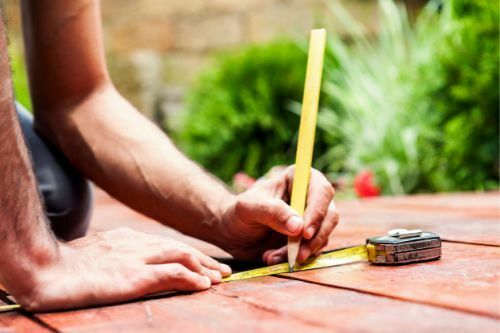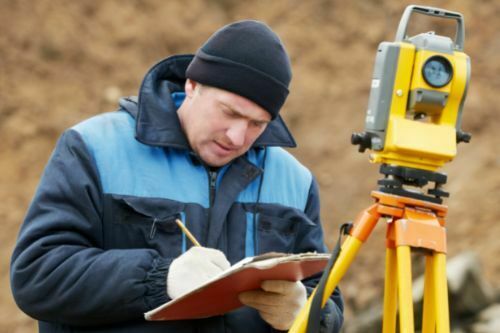Table of Contents
In today’s highly competitive and digitalized world, knowledge of mensuration is essential in solving a wide range of problems. Basic and strong mathematical knowledge can help you survive independently and also significantly develop your critical thinking and reasoning abilities. Basic mensuration can be a wonderful tool to leverage your existing theoretical and practical knowledge of the world, allowing you to make the most of the given information. Mensuration formula types can also be applied to a wide variety of industries, including engineering, physics, biology, accounting, technology, programming, and chemistry.
Keep reading to learn more about mensuration and the formulas worth learning!
What is mensuration?
Mensuration is a branch of mathematics that studies the different measurements of geometric figures. This includes parameters such as length, volume, shape, lateral surface area, and total surface.
Learning about the mensuration formula types is an excellent way to prepare for any stage of your academic and professional career. This is often a topic that is extensively questioned in competitive examinations for higher-level degrees.
What is the difference between 2D and 3D shapes?

Before diving into the different mensuration formulas, it is important to understand that there are two major types of geometric shapes. These are two-dimensional (2D) and three-dimensional (3D) shapes.
2D shapes refer to figures that are surrounded by three or more straight lines in a single plane. These types of shapes do not contain any height or depth and comprise 2D, that is, length and breadth. Mensuration is often used to measure the area and perimeter of 2D shapes.
3D shapes are figures that are covered by multiple planes or surfaces. 3D shapes are solid and have height, as well as depth. Given that they are three-dimensional, they comprise length, breadth, and width.
What are the important terms in mensuration formulas?
Understanding the different mensuration formula terminologies is a core requirement for this branch of mathematics.
Here are some common terms and their meanings –
- Area (A)
The area is a term used to describe the surface that is enclosed within a shape.
- Perimeter (P)
Perimeter, simply put, is the boundary length of an area.
- Volume (V)
Volume is the space that is occupied by a three-dimensional object.
- Total Surface Area (TSA)
The TSA is the sum of all the areas of the surfaces on an object.
- Curved Surface Area (CSA)
CSA is the area that is enclosed by the curved portion of a geometrical object.
- Lateral Surface Area (LSA)
LSA is the sum of an object’s surfaces except for the top and base.
What is the different mensuration formula for 2D shapes?

Before diving into the different mensuration formulas for 2D shapes, it is important to learn about the different types of 2D triangles.
Here are the four different triangles you should know –
- Scalene Triangle – In such a triangle, neither of the three sides and the angles are of the same value. The sum of all the angles in the triangle equals 180o
- Isosceles Triangle – In an isosceles triangle, any 2 sides are equal and the values of the 2 angles subtended by the sides are also equal.
- Equilateral Triangle – In an equilateral triangle, all sides are equal and the value of all 3 angles is 60o
- Right-Angled Triangle – A right-angled triangle is a triangle in which one angle equals 90 degrees.
Here are the different mensuration formulas for 2D shapes –
| Shape | Area (in square units) | Perimeter (in units) |
| Square | a2 | 4a |
| Rectangle | L x B | 2 (L+B) |
| Circle | 𝚷r2 | 2𝚷r |
| Scalene Triangle | √{s(s-a)(s-b)(s-c)} where, s=(a+b+c)/2 | a+b+c |
| Isosceles Triangle | ½ x B x H | 2a+b |
| Equilateral Triangle | (√3/4) x a2 | 3a |
| Right-Angle Triangle | ½ x B x H | B + Hypotenuse + H |
| Rhombus | ½ x D1 x D2 (D = diagonal) | 4 x Side |
| Parallelogram | B x H | 2(L+B) |
| Trapezium | ½ x H x (A+B) | A+B+C+D |
What are the different mensuration formulas for 3D shapes?
The different mensuration formulas for 3D shapes are –
| Shape | Volume (cubic units) | LSA or CSA(square units) | TSA (square units) |
| Cube | a3 | LSA = 4a2 | 6a2 |
| Cuboid | L x B x H | LSA = 2H(L+B) | 2(LB+BH+HL) |
| Sphere | (4/3)𝚷r3 | 4𝚷r2 | 4𝚷r2 |
| Hemisphere | (⅔)𝚷r3 | 2𝚷r2 | 3𝚷r2 |
| Cylinder | 𝚷r2h | 2𝚷rh | 2𝚷r x (h+r) |
| Cone | 1/3𝚷r2h | 𝚷rl | 𝚷r(r+l) |
Mensuration problems – practice questions to cement your understanding
Here are five quick examples of mensuration formula practice questions to help you retain your concepts better –
- Find the perimeter of a rectangular park with a length of 20 centimeters and a breadth of 80 centimeters.
- Samuel is staying in a cuboidal hotel room with dimensions of 22 x 11 x 8 meters. Find the total surface area of the hotel room.
- There is a water tank that is 500 meters long and 300 meters wide. Water flows through the tank (which has a cross-section of 0.4 x 0.6 meters) at a speed of 15 kilometers per hour. Calculate the time in hours until which the water level reaches 10 meters.
- The volume of a cylinder is 2000 cubic meters. The radius of its base is 50 meters. Determine the height of the cylinder.
- A cone of a height of 30 centimeters and a diameter of 50 centimeters is cut out of a wooden sphere with a radius of 25 centimeters. What is the percentage of wood that is wasted?
Key takeaways
- In today’s highly competitive and skilled world, it is important to have a firm foundation in mathematics and the discipline of mensuration.
- Mensuration is concerned with understanding and identifying the dimensions of 2D and 3D shapes.
- Knowledge of mensuration formulas can be applied to a wide range of industries across the global economy.
Was this blog informative? If yes, please share your thoughts in the comments below. Click here to reach out to us for more information on the different mensuration formulas. We would be happy to assist you with your queries!
Liked this blog? Read next: Frequently asked GRE math questions you should know!
FAQs
Q1. What is the best way to remember all the mensuration formulas?
Answer – Practicing writing and applying different formulas to different situations is an excellent way to remember relevant information.
Q2. What is the major difference between mensuration and geometry?
Answer – Mensuration deals with the calculation of various parameters, such as perimeter, area, and volume. On the other hand, Geometry deals with the study of points & lines and their properties.
Q3. When is Heron’s formula applied?
Answer – In the case of triangles, if the sides are mentioned, then the area of a scalene triangle can be calculated using Heron’s formula; where s=(a+b+c)/2.






